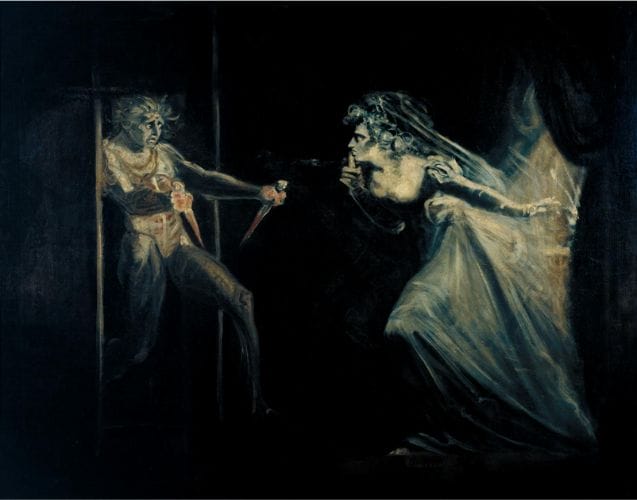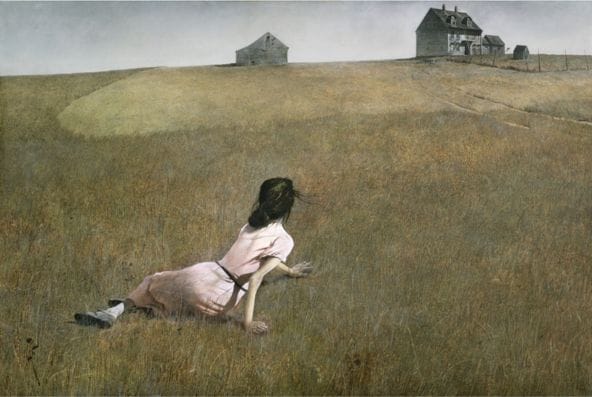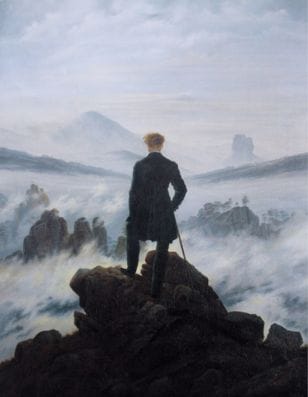
In the case of art, there are two primary ways in which I introduce the work of different artists into my teaching of English Literature:
Direct: A work of art that is somehow directly related to the text being studied, perhaps because it is by the same writer or an artistic depiction of the work of literature itself
Indirect: A work of art that is not directly connected to the studied text, but helps to enrich, frame or tease out what we are discussing. This often takes the form of using a work of art to help establish the emotional landscape of something within the text, whether an image or a specific moment
In order to better exemplify what I mean, allow me to provide some specific examples that I’ve used in the past.
Example No. 1: Macbeth and Henry Fuseli

Lady Macbeth Seizing the Daggers exhibited 1812 Henry Fuseli 1741-1825 http://www.tate.org.uk/art/work/T00733
This haunting painting depicts the moment immediately after Macbeth has murdered Duncan in Act II Scene II and was one of several that Henry Fuseli painted based on Shakespeare’s play. For me, this is the most immediately visceral, but I tend to use all of them at some point when teaching Macbeth.
In this particular example, I would show the class this painting just before we begin a more detailed analysis of this moment in the play but after they know what is happening. I would ask them to look carefully at the painting before then turning to their partner to discuss how it makes them feel and what emotions the painting illicit. We might then discuss, for instance, Fuseli’s use of colour, the body language of Macbeth and Lady Macbeth and what this might suggest about their relationship, the revulsion and anguish apparent in Macbeth, the almost ethereal quality of Lady Macbeth and to which other characters this may connect.
With all of this in mind we might then turn to the play itself and treat the painting almost as one interpretative lens through which to analyse the scene. Do we agree with what seems to be implied by Fuseli’s painting? Can we find evidence for what the painting implies? Do we disagree and why? Analysing this moment by way of the painting helps to open up and tease out a rich discussion about the text itself.
Example No. 2: Perfect Lovers by Felix Gonzales-Torres

Perfect Lovers by Felix Gonzales-Torres 1991 https://www.moma.org/collection/works/81074
This is one of my personal favourite works of art and I’ve used it lots of times in relation to lots of different texts whenever I wish to explore what it means to love someone. I’ve used it, for example, when introducing the A Level Love Through the Ages Specification, discussing the Love and Relationships cluster of GCSE poetry, or talking about Romeo and Juliet.
In each instance, and for this work of art, I always begin by offering some context. The two clocks that comprise this work of art are initially set to the same time, but they eventually become out of sync. It was conceived after Gonzalez-Torres’ partner was diagnosed with AIDS.
Once the students better appreciate why I’m asking them to look at two seemingly identical clocks, I ask them to first of all think about and then share with the person sitting next to them what they feel this seeks to convey about the nature of love. Invariably some of the ideas teased out of this discussion include, but is not limited to:
-
Notions of transience and love being lost, symbolised here by the figure of two ticking clocks
-
The difficulties relationships might encounter, given they become out of sync
-
The physical shape of the infinity sign that the clocks make
-
The possible significance of the fact we often, in everyday conversation, personify clocks as having hands and a face
-
The almost intimacy of the two clocks as they seem to kiss one another
-
The way in which the two clocks seem to form the shape of two eyes, with the viewer forced to look into them and watch time tick away
We then return to these ideas, or at least some of them, as we begin exploring whatever the text might be, thinking about ways in which there are thematic and conceptual connections between the literature and work of art.
Example No. 3: Christina’s World by Andrew Wyeth

Christina’s World by Andrew Wyeth 1948 https://www.moma.org/collection/works/78455
This is a fascinatingly ambiguous painting and one that I have used several times when thinking about Eva Smith from An Inspector Calls. I would begin by showing the class the painting and then after giving them time to consider it ask how they think the main figure is feeling in this moment. Expectedly, responses range from determined to resilient to alienated to scared to abandoned, and so on. This ambiguity is really crucial.
At this point, I would tend to first of all introduce a little context, that it was inspired by Wyeth’s neighbour who developed a degenerative muscle disorder that left her unable to walk. She refused to use a wheelchair, preferring to crawl. I might even show them these words from Wyeth: ‘The challenge to me was to do justice to her extraordinary conquest of a life which most people would consider hopeless’.
This might then lead into a fascinating discussion about how we respond to Eva: is she, like Christina, afraid and alone or determined and resilient? We might also consider whether we think Priestley shared the same motivations as Wyeth.
Example No. 4: Wanderer Above a Sea of Fog by Casper David Friedrich

Wanderer Above a Sea of Fog, Casper David Friedrich 1818
One of the most iconic works of art of the Romantic movement, this painting conveys the sublimity and power of nature as well the seeming suggestion that the central figure is both master of what he surveys, but also alienated and insignificant. It is a painting of introspection mediated through the external landscape. Such was the complex relationship with the natural world that the Romantics negotiated.
I have used this painting to help introduce Romanticism, either in regards to Wordsworth’s Prelude for GCSE or Skirrid Hill for A Level. I tend to show the class the painting and explain it is a central artistic work of Romanticism, without explaining, yet, what that is. I then ask them to consider what views of nature and landscape a Romantic might have, using the painting as a representative example. This typically leads into a discussion about the fear nature can inspire or its majesty, its beauty and wildness. I then explain to them the defining characteristics of Romanticism and return to the painting in light of this new information. We then return to these ideas, anchored to the painting, when discussing the text.
Strategies for including a discussion of art alongside literature
It is possible that our students are not used to thinking and talking about works of art in a critical capacity. Here are some cues that may help them to connect whatever work of art you might be showing them to the piece of literature being studied.
-
How does the work of art make you feel? What emotions does it illicit?
-
Is there a figure depicted within the painting? What are they doing and why?
-
What are the dominant colours in the work of art? Why might this be significant? Does it seem vibrant and energized? Overcast? Melancholic? Jarring? Does it seem to have a visual tone?
-
Does there seem to be any symbolism that you can notice?
-
Is there any obvious landscape or setting and what does this suggest?
-
Is it realistic or perhaps otherworldly?
-
What can you see in the foreground or the background?
Obviously these questions would change depending on what the work of art is and how you might wish to connect it to whatever text is being studied. For me, the best discussions revolve around the emotions and feelings the work of art evokes and how this might frame or feed into a better appreciation and understanding of the work of literature. In order to achieve this, I’ll tend to introduce a work of art either to generate discussion before introducing a text or alongside a particular scene or moment.
I would also always offers further contextual information about the work of art, even if just in passing: who created it, when, and where they could see it, plus any specific connections it might have to the studied text.
Using works of art in this way has proven in the past to be a really productive way to open up textual discussion, provide an often more immediately palpable emotional hook as well as exposing students to rich networks of creativity, literary and artistic.
‘Art & Literature: Examples from the Classroom’ by Andy Atherton, published in The Enquiry: Issue 6.
The Enquiry is a staff journal dedicated to reflections on educational research, and teaching and learning at Downe House School. Issue 6 was published in November 2023, looking back at Summer term 2023.
All previous issues can be found here: The Enquiry by downehouseschool Stack – Issuu.













